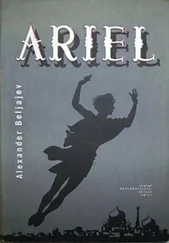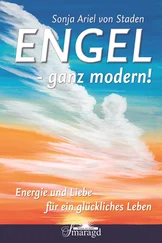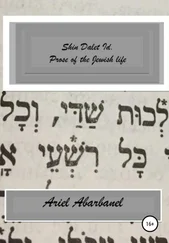Ariel Toaff - Blood Passover
Здесь есть возможность читать онлайн «Ariel Toaff - Blood Passover» весь текст электронной книги совершенно бесплатно (целиком полную версию без сокращений). В некоторых случаях можно слушать аудио, скачать через торрент в формате fb2 и присутствует краткое содержание. Жанр: Религиоведение, на английском языке. Описание произведения, (предисловие) а так же отзывы посетителей доступны на портале библиотеки ЛибКат.
- Название:Blood Passover
- Автор:
- Жанр:
- Год:неизвестен
- ISBN:нет данных
- Рейтинг книги:3 / 5. Голосов: 1
-
Избранное:Добавить в избранное
- Отзывы:
-
Ваша оценка:
- 60
- 1
- 2
- 3
- 4
- 5
Blood Passover: краткое содержание, описание и аннотация
Предлагаем к чтению аннотацию, описание, краткое содержание или предисловие (зависит от того, что написал сам автор книги «Blood Passover»). Если вы не нашли необходимую информацию о книге — напишите в комментариях, мы постараемся отыскать её.
Blood Passover — читать онлайн бесплатно полную книгу (весь текст) целиком
Ниже представлен текст книги, разбитый по страницам. Система сохранения места последней прочитанной страницы, позволяет с удобством читать онлайн бесплатно книгу «Blood Passover», без необходимости каждый раз заново искать на чём Вы остановились. Поставьте закладку, и сможете в любой момент перейти на страницу, на которой закончили чтение.
Интервал:
Закладка:
611
"Et aliqui ex suprascriptis dicebant hec verba Hebraica, videlicet: Hatto nisi assarto fenidecarto cho lesse attoloy le fuoscho folislimo cho lesso, que verba significant: "Tu martiriçaris sicut fuit martirizatus et consumptus lesus Deus Cristianorum suspensus, et ita fieri possit omnibus nostris inimicis" [“And all the above mentioned persons said these Hebrew words: Hatto nisi assarto fenidecarto cho lesse attoloy le fuoscho folislimo cho lesso, which means : “You will be tortured to death and eaten as was Jesus Christ of the Christians the hanged one, and thus may it be with all our enemies”] (cfr. [Bonelli], Dissertazione apologetica , cit., p. 149; Esposito and Quaglioni , Processi , cit., voI. I, p. 354).
612
In Hebrew pronounced the German way, the phrase sounds like this: Atto nizfavto fenidecarto co-Iesho hattoloy ecc. "Jesus crucified and pierced", as an expression of offensive meanings, is found in numerous anti-Christian Hebraic compositions, widespread in medieval Ashkenazi Judaism (cfr. Shanan, Gtò ha-ish. Jesus through Jewish Eyes , cit., p. 61).
613
"Samuel fecit quandam predicationem et dixit non esse verum quod lesus Christus fuisset ex vergine natus, sed quod eius mater, videlicet beata virgo Maria, fuerat meretrix et adultera et Christus ex adultera natus et quod fuerat exginta tempore quo menstrua patiebatur" [“Samuele declared that it was not true that Jesus Christ was born of a virgin, but that His mother, i.e., the Virgin Mary, was a whore and an adulteress and that Christ was born of an adulteress and that He was conceived while she was having her menstrual period”] (Archivio di Stato di Trento, Archivio Principesco Arcivescovile, sez.lat., capsa 69, n. 163).
614
In this regard, see R. Di Segni, Due nuove fonti sulle "Toledot Jeshu", in "La Rassegna Mensile di Israel", LV (1989), pp. 131-132. The author stresses that "the importance of the information inferred from the Trent trial, which, for the moment, it is the oldest source which explicitly considers Jesus to be the son of a menstruating woman” and records “worthy of note” the “German origin of the narrator, which could cause one to assume that the information is of the same origin as well”. It seems implicit that Riccardo Di Segni does not consider the tale of Samuele of Nuremberg’s anti-Christian sermon as the fruit of a suggestive pressures of the Trent judges upon the accused, but he places it in relationship with the reasons for the anti-Christian polemic present in contemporary Ashkenazi Judaism with peculiar sociocultural characteristics. On the story of Jesus the "bastard, son of a menstruating woman" in the Toledot Yeshu and on its importance, see Id., Il Vangelo del Ghetto. Le "storie di Gesù": leggende e documenti della tradizione medievale ebraica , Rome, 1985, pp. 120-123.
615
The defendants were required to respond in relation to the "verba scripta in dicto libro Mazor ( recte: Machazor , the liturgical form for the feasts) sibi ostensa in capitulo quod incipit: Anni, anni amezaber (recte: anì, anìha-medabber ), videlicet in lingua latina: Io sonno quello che parla" (cfr. A. Antoniazzi Villa, Un processo contro gli ebrei nella Milano del 1488 , Milan, 1986, pp. 132-135).
616
Machazor le-yamim noraim le-fì minhage' bene' Ashkenaz ("Handbook of solemnities according to the custom of the German Jews"). II: Yom Kippur , by E.D. Goldshmidt, Jerusalem, 1970, pp. 555-557.
617
On the Ashkenazi name Frishke, Fritschke, Frits, Fritse, Fridman, rendered into Italian as “Freschi” or “de Frigiis”. See A. Beider, A Dictionary of Ashkenazic Given Names , Bergenfield (N.J.), 2001, p. 315.
618
On the personage of Maestro Lazzaro di Raffaele Freschi, his conversion to Christianity and his anti-Jewish activity at Venice, see S. Franco, Ricerche su Lazzaro ebreo de Frigeis, medico insigne ed amico di Andre Vesal , in "La Rassegna Mensile di Israel", XV (1949), pp. 495-515; F. Piovan, Nuovi documenti sul medico ebreo Lazzaro "de Frigeis", collaboratore di Andrea Vesalio , in "Quaderni per la storia dell'Università di Padova", XXI (1988), pp. 67-74; D. Carpi, Alcune nuove considerazioni su Lazzaro di Raphael de Frigiis , in "Quaderni per la storia dell'Università di Padova", XXX (1997), pp. 218-225.
619
The trial of the Holy Office at Elena Freschi Olivi is transcribed by P.C. loly Zorattini, Processi del S. Uffizio contro ebrei e giudaizzanti . I: 1548-1560 , Florence, 1980, pp. 51-52, 151-224. On this case, see also B. Pullan, The Jews of Europe and the Inquisition of Venice (1550- 1670), Oxford, 1983, pp. 282-289.
620
Cfr. loly Zorattini, Processi del S. Uffizio contro ebrei e giudaizzanti , cit., voI. I, p. 152.
621
Il processo ad Aron e Asser dinanzi all'Inquisizione di Venezia è segnalato e trascritto da P.C. loly Zorattini, Processi del S. Uffizio contro ebrei e giudaizzanti. II : 1561-1570, Florence, 1982, pp. 17-19,31-48 . In this regard , see also Pullan , The Jews of Europe and the Inquisition of Venice , cit., pp. 296-297.
622
The Hebrew expression mamzer barbanid is an obvious corruption of mamzer bar ha-niddah , "bastard son of a menstruating woman", and not as maintained by loly Zorattini, “ mamzer barchanit ” (?), "turncoat bastard, deserter" (cfr. loly Zorattini, Processi del S. Uffizio contro ebrei e giudaizzanti, cit., voI. II, p. 33).
623
Cfr. ibidem, pp. 33, 46.
624
Babylonian Talmud, Ghittin, c. 57a.
625
"Interrogatus si dicunt lesum Christum damnatum est in inferno et ibi positum est in vase uno pieno excrementre et si habent predicta scripta in libris eorum vel aliis scripturis, respondit et dicit quod semel in civitate Romana et tempore papis Sisti audivit predicta verba et vidit predicta in uno quinterneto et verba ea legit" [“In reply to the question of whether it is said that Jesus Christ is in hell and was placed in a vase full of excrement there and whether such words appeared in their books or other scriptures, he answered and said that he had read the aforementioned words in Rome, in a booklet during the reign of Pope Sixtus”] (cfr. Antoniazzi Villa, Un processo contro gli ebrei nella Milano del 1488 , cit., p. 102).
626
Salomone da Como stated "quod comprehendere ipsius quod (Iesu) sit iudicatus in excrementre calido" [“that he understood that (Jesus) was being punished in hot excrement”](cfr. ibidem, pp. 112-114).
627
Cfr. A.M. Haberman, Sefer ghezerot Ashkenaz we-Zarf at ("Book of the Persecutions in Germany and France"), Jerusalem, 1971, p. 36.
628
Luigi Maria Benetelli, Le saette di Gionata scagliate a favor degli Ebrei , Venice, Antonio Bortoli, 1703, p. 410.
629
In this regard, see S. Krauss, Imprecation against the Minim in the Synagogue , in "The Jewish Quarterly Review", IX (1897), pp. 515- 517.
630
In this regard, see Y. Boksenboim in Azriel Diena, Sheelot w-teshuvot. Responsa, by Y. Boksenboim, Tel Aviv, 1977, voI. I, p. 12 note 5, and, more recently, R. Weinstein, Marriage Rituals Italian Style. A Historical Anthropological Perspective on Early Italian Jews , Leyden, 2004, pp. 225-226.
Читать дальшеИнтервал:
Закладка:
Похожие книги на «Blood Passover»
Представляем Вашему вниманию похожие книги на «Blood Passover» списком для выбора. Мы отобрали схожую по названию и смыслу литературу в надежде предоставить читателям больше вариантов отыскать новые, интересные, ещё непрочитанные произведения.
Обсуждение, отзывы о книге «Blood Passover» и просто собственные мнения читателей. Оставьте ваши комментарии, напишите, что Вы думаете о произведении, его смысле или главных героях. Укажите что конкретно понравилось, а что нет, и почему Вы так считаете.












